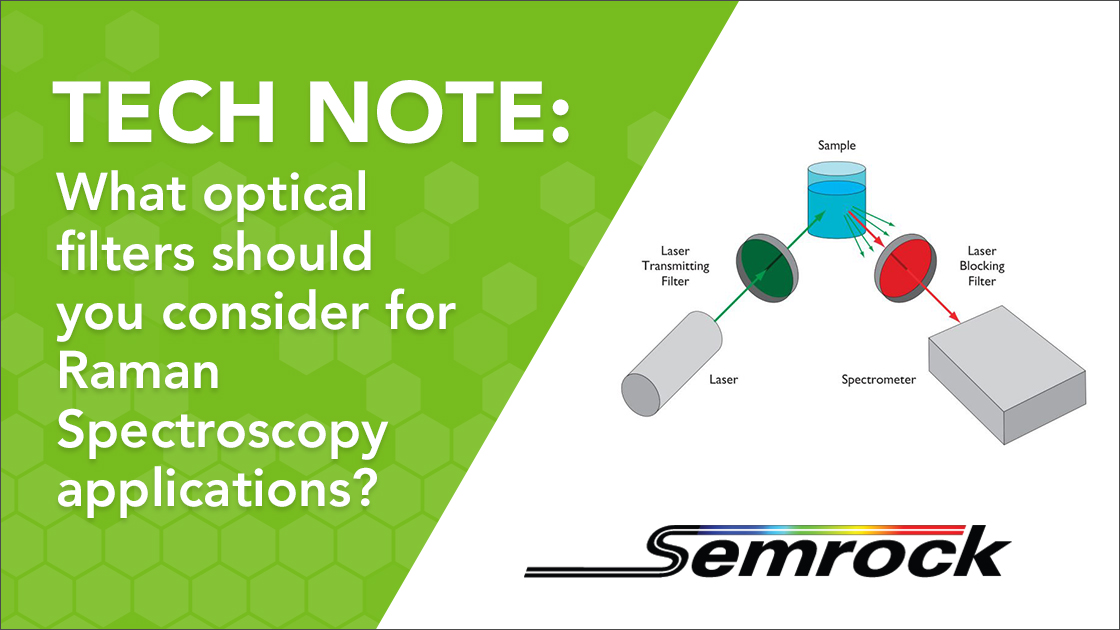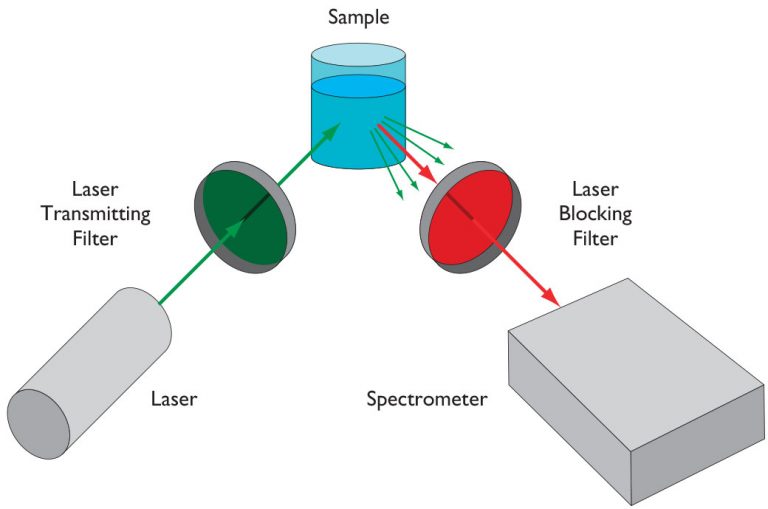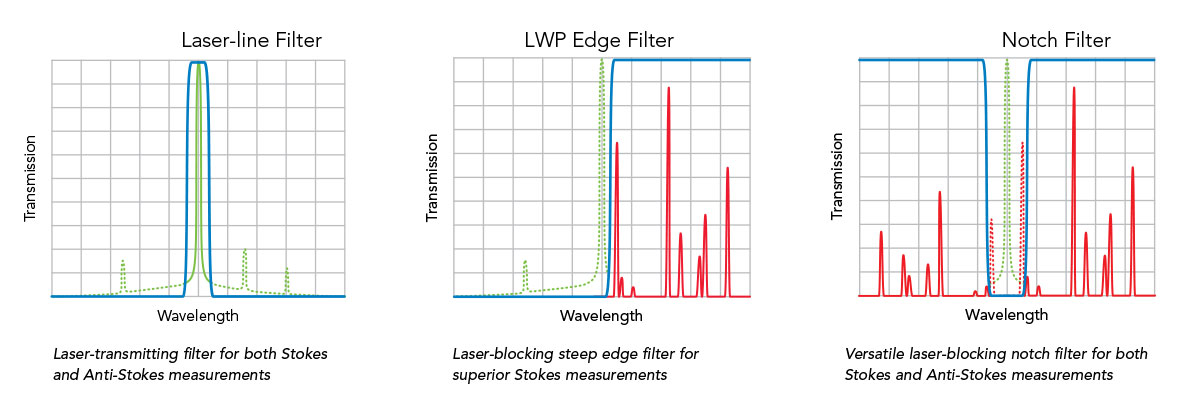

What optical filters should you consider for Raman Spectroscopy applications?

There are three basic types of Raman instrumentation:
- Raman microscopes, also called micro-Raman spectrophotometers, are larger-scale laboratory analytical instruments for making fast, high-accuracy Raman measurements on very small, specific sample areas.
- Traditional laboratory Raman spectrometers are primarily used for R&D applications. They range from “home-built” to flexible commercial systems that offer a variety of laser sources, means for holding solid and liquid samples, and different filter and spectrometer types.
- Finally, a rapidly emerging class of Raman instrumentation is the Raman micro-probe analyzer. These complete, compact, and often portable systems are ideal for use in the field or in tight manufacturing and process environments. They utilize a remote probe tip that contains optical filters and lenses, connected to the main unit via optical fiber.
How Does Raman Spectroscopy Work?
In Raman spectroscopy, an intense laser beam is used to create Raman (inelastic) scattered light from a sample under test. The Raman “finger print” is measured by a dispersive or Fourier Transform spectrometer. Optical filters are critical components in Raman spectroscopy systems to prevent all undesired light from reaching the spectrometer and swamping the relatively weak Raman signal.
Laser Transmitting Filters inserted between the laser and the sample block all undesired light from the laser (such as broadband spontaneous emission or plasma lines) as well as any Raman scattering or fluorescence generated between the laser and the sample (as in a fiber micro-probe system). Laser Blocking Filters inserted between the sample and the spectrometer block the Rayleigh (elastic) scattered light at the laser wavelength.

The illustration above shows a common system layout in which the Raman emission is collected along a separate optical path from the laser excitation path. Systems designed for imaging (e.g., Raman microscopy systems) or with remote fiber probes are often laid out with the excitation and emission paths coincident, so that both may take advantage of the same fiber and lenses.
Basic Filter Types
There are three basic types of filters used in systems with separate excitation and emission paths: Laser-line filters, Edge Filters, and Notch Filters. The examples below show how the various filters are used. In these graphs the blue lines represent the filter transmission spectra, the green lines represent the laser spectrum, and the red lines represent the Raman signal (not to scale).

Laser-line Filters are ideal for use as Laser Transmitting Filters, and Notch Filters are an obvious choice for Laser Blocking Filters. In systems using these two filter types, both Stokes and Anti-Stokes Raman scattering can be measured simultaneously. However, in many cases Edge Filters provide a superior alternative to notch filters. For example, a long-wave-pass (LWP) Edge Filter used as a Laser Blocking Filter for measuring Stokes scattering offers better transmission, higher laser-line blocking, and the steepest edge performance to see Raman signals extremely close to the laser line. For more details on choosing between edge filters and notch filters, see our Technical Note, "Edge Filters vs. Notch Filters for Raman Instrumentation."
In systems with a common excitation and emission path, the laser must be introduced into the path with an optic that also allows the Raman emission to be transmitted to the detection system. A 45° dichroic beamsplitter is needed in this case. If this beamsplitter is not as steep as the edge filter or laser-line filter, the ability to get as close to the laser line as those filters allow is lost.
Semrock Optical Filters for Raman Spectroscopy
Semrock manufactures the following high-performance optical filters as standard catalog products for your Raman Spectroscopy Applications:
- MaxLine® Laser-line filters
- RazorEdge® long-wave-pass
- RazorEdge® short-wave-pass filters
- EdgeBasic™ value long-wave-pass filters
- Ultrasteep RazorEdge Dichroic™ beamsplitter filters
- StopLine® notch filters
- Verona™ long-pass edge filters
For non-standard wavelengths and specifications, please enter your requirements in this form.
Related Publications
Article in Photonics Media- Advancements in Raman Spectroscopy Find Real-World Uses in the Life Sciences
